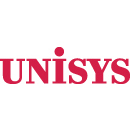IT visionary and innovator laid foundations of software development at Unisys predecessor companies
Unisys Corporation today proudly salutes the late Rear Adm. Grace  Hopper (1906-1992), whom President Barack Obama honored as a posthumous recipient of the Presidential Medal of Freedom in a White House ceremony on November 22. In India, Hopper is remembered as an iconic women leader who has inspired generations of women technologists to take up research and pursue professions in technology.
Hopper (1906-1992), whom President Barack Obama honored as a posthumous recipient of the Presidential Medal of Freedom in a White House ceremony on November 22. In India, Hopper is remembered as an iconic women leader who has inspired generations of women technologists to take up research and pursue professions in technology.
The medal is “the Nation’s highest civilian honor, presented to individuals who have made especially meritorious contributions to the security or national interests of the United States, to world peace, or to cultural or other significant public or private endeavors.”
“Grace Hopper richly deserves this recognition for the role she played in ushering in the digital era,” said Unisys President and CEO Peter Altabef. “Through her work at Unisys predecessor Sperry Corporation and earlier constituent companies, as well as in her long active and reserve service in the U.S. Navy, Adm. Hopper was consistently at the forefront of innovation in applied IT. She embodies a vision and spirit that inspire and inform our work at Unisys every day.”
Hopper and her team wrote some of the earliest programs for UNIVAC, the first high-speed digital computer. (UNIVAC was developed by a predecessor of Sperry Corporation, which merged with Burroughs Corporation in 1986 to create Unisys.) In doing so, she pioneered the use of sharable code libraries, making it easier and faster for software developers to collaborate, and drove development of the first compilers, making the task of programming computers much simpler.
Hopper also led international efforts to standardize programming languages and compilers in order to reduce the time it takes software developers to create and bring solutions to market.
“Grace Hopper was a true visionary,” said Tarek El-Sadany, Senior Vice President, Technology and Chief Technology Officer for Unisys. “She continually sought to make computers easier to use for programmers and end users alike, anticipating and driving the ubiquitous use of information technology that is the hallmark of today’s digital age.”


